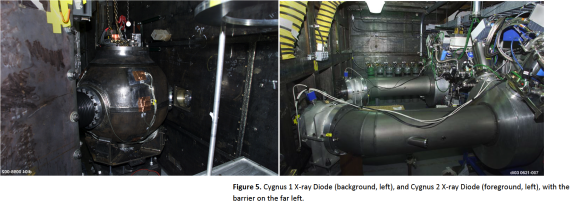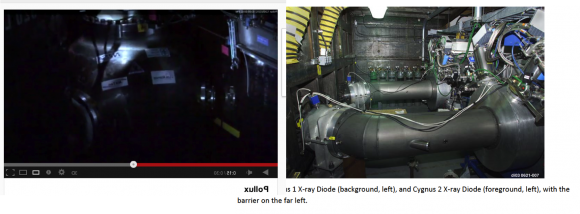There was a minor dustup on Twitter between my colleague, Jon Wolfsthal, and the Bulletin of Atomic Scientists. Like many discussions on Twitter, 140 characters at a time just didn’t get the job done.
At issue is an important article that Frank von Hippel wrote proposing transparency surrounding subcritical experiments. Frank’s article was occasioned by a US subcritical test, named Pollux (along with its twin, another experiment named Castor in the Gemini series). Frank has long argued, rather sensibly it seems to me, for confidence building measures relating to subcritical experiments in the United States, Russia and China. I have also suggested that such transparency and confidence building measures ought to be an important part of package designed to win Senate ratification of the Comprehensive Nuclear Test Ban Treaty.*
Pollux was a useful chance to revisit these discussions. Allow me to make a series of apparently unrelated observations.
1. Commending NNSA on Transparency
I find it very hard to fault NNSA in terms of transparency, starting with the press release and video. I understand why Frank argues that the video features some unidentifiable equipment, but I think it is possible to identify some of the equipment, especially in the context of many other images released by NNSA relating to subcritical experiments.
The video shows the vessel that contains the subcritical experiment. Furthermore, it is shot at an angle that shows some of the diagnostics. If you reverse this image of Armando or the blurry video of Pollux, I believe you can line up both images with the radiography equipment:
But, really, I must be one of a very small number of people who care about such things. (Even smaller when we remove people named Ivan or Wei.) I welcome, by the way, discussions about what we can make out from the photographs. I am just working through them myself.
More important, NNSA has also released information about the diagnostic equipment used in the experiment, including bunch of data about the Cygnus Dual Beam Radiographic Facility and Multiplexed Photonic Doppler Velocimeter, which recently won an award. The best part about the MPDV, by the way, is that the fisheye lens is mounted on a cavity probe. (No, I didn’t just win $100 for working “cavity probe” into a blog post. Why would you ask such a question?) NNSA also releases statistics on the number experiments, by type, on a quarterly basis. Overall, I think NNSA does a pretty good job of making information available about subcritical testing.
I also understand Frank’s argument that conducting subcritical experiments at a test site –as the US, Russia and China do–“naturally” creates suspicion. Having said that, U1A is the facility that was designed to accommodate such experiments. It is the appropriate technical location. The solution is not to spoil the Arizona wilderness with a green-field underground test facility. The solution is a further set of transparency and confidence building measures at existing nuclear weapons test sites.
2. Test Site Transparency
What I take to be Frank’s fundamental point is that, even if the Russians and Chinese made similar efforts at transparency, that wouldn’t solve our confidence building problem. He is right. As I have noted in reference to Russia and Chinese subcritical testing, lack of transparency has added to suspicions of hydronuclear and low-yield testing, both of which would violate the CTBT. The Russians, in particular conducted a very large number of hydronuclear experiments, which is a reasonable thing to wonder about.
If we are serious about a CTBT, we need to think about how to distinguish between subcritical experiments, which are not prohibited by the CTBT, and hydronuclear ones, which are.
3. Plutonium and Scaled Experiments
Third, and finally, some of my colleagues have claimed that Pollux was the first “scaled experiment” in which plutonium was used in a scale model of the nuclear weapon. Such experiments are not prohibited by the CTBT. The major question here is one of cost and feasibility, rather than proliferation. Nick Roth, Hans Kristensen and Stephen Young wrote:
NNSA officials claim that scaled experiments could yield ten times more data points and save money because one large scaled experiment could replace twenty of the smaller hydrodynamic experiments conducted today. Lab scientists maintain that scaled experiments would require major new equipment investments that are not currently planned. At present, U1a in Nevada apparently does not have the diagnostic equipment needed to harvest the additional data generated by scaled experiments.
I would add that the this experiment was the first use of the Multiplexed Photonic Doppler Velocimeter, which may well resolve the issue of diagnostics. Don Cook claimed in the press release that “Diagnostic equipment fielded by our scientists resulted in more data collected in this single experiment than all other previous subcritical experiments.” I think it is worthwhile to be cautious about relying on press releases for factual content, but to a first approximation I would argue that getting more data cheaply without violating the CTBT is a good thing.
Random footnote from above.
* I should add that I am pessimistic about the ability of the United States Senate to ratify any treaty, a pessimism only deepened by the shameful debacle that played out on the UN disability treaty. So pessimistic, I would say, that the Senate’s forfeit of its constitutional responsibilities makes me a strong supporter of pursuing all international agreements, including those involving arms control, through Congressional-Executive Agreements.



Jeffrey,
What’s my take?
I am an outside on-looker who took and experimented with physics, accelerators, and diffusion pumps during college. I like it, and thought that someday someone would build an interstellar drive out of it, or cleanly solve the energy problem.
Seeing the physics I loved being used to design nuclear weapons just makes me feel kind of ill. It’s like the first time I saw a picture of the Teller-Ulam Device shack. It was obviously experimental physics, but in a few microseconds the entire shack would be vapor.
I have a gut fear of the devices and they are only photographs.
It is all so sad. It reminds me of Frankenstein.
-Anon2
Working on weapons makes you ill? How convenient from your safe and comfortable life in the 21st century.
How about the tens of millions that perished under Stalin and Mao, the only thing stopping their expansion being nuclear weapons? Never heard of uprisings in Poland, Hungary, E. Germany, Czechoslovakia, Berlin blockade, Korean war, Vietnam, etc…?
Crocodile tears make me ill…
Ara,
I cannot argue with your point re Stalin and Mao; and by extension, Iran and North Korea. Regardless, I believe it is truly unfortunate that some of the best physicists need work on nuclear weapons. And the weapons themselves still have for me a negative feel like the AR-15 used last week in Newtown. Both guns and the bomb are tools of war, but that doesn’t mean we have to like them.
-Anon2
Totally unrelated (sorry, ACW doesn’t non-post-specific comments) but does anyone know why the UN Security Council Dec. 12 Presidential Statement (PS) on North Korea has not been posted to the UN Security Council website (http://www.un.org/en/sc/documents/statements/2012.shtml)? There’s a Dec. 10 PS and two Dec. 19 PS. I don’t believe the N. Korea-related statement is non-public.
Hi JM,
I was also wondering why it was not posted.
It is apparent now that the statement made by the SC
President was informal comments only. It was
neither an official presidential statement nor
an official press statement. And yet, many reporters
reported it at the time as if it was an official
presidential statement. They were fooled.
This was partly due to the fact that the SC president
(Morroco) did not clarify at the beginning of his
statement whether he was making a presidential statement,
a press statement, or an informal commen.
In addition, he did not take any questions from the
reporters.
If you review the UN webcast of the SC president’s
statement at the time, you will notice that there is an explanation in the bottom of the video that his remarks were informal comments. Also, if you read his statements carefully, you will notice that he only said, “MEMBERS of the S.C. condemned this launch using the ballistic missile technology.” (not the SC……)
Then, Susan Rice appeared at the same SC media stakeout on the same day and told to the media the following: “The international community and COLLEAGUES in Security Council have condemned this launch….” Very tricky!!
The rumor is that the Chinese ambassador had a heated
exchange with Susan Rice inside the SC. So it seems
there was no concensus in the first meeting of the SC.
@John: Thanks. Looks like you’ve made a close study of the process. I’ll retrace your analytic steps and if as you say, very tricky indeed. A statement by the UNSC president, not a “presidential statement.”
Would hydronuclear tests, on a small enough scale to be disguised as hydrodynamic or subcritical tests, be observable by seismic or radionucleotide detectors?
More importantly, would they generate valuable enough data for the US, Russia or China to justify the risk getting caught?
No. Maybe.
The value of subcritical experiments and the “old” hydronuclear tests is exagerated, and we lost all perspective.
All US tests of “first” prototype devices worked the first time around (fission of thermonuclear), usually better than expected, and without the benefit of supercomputers and high-fidelity models (paper, pencils, slide rules, and mechanical desk calculators)
The implied justification is the “misterious” Plutonium. We have “zillion” data points for Plutonium equation of state, and we are still running after “perfection”. To what end, more significant digits?
The US (congressional)opposition to CTBT is based on ignorance and fear, a la cold war: ignorance of basic operation of nuclear weapons, and “fear” of some magic new discovery that will obsolete and render worthless our nuclear arsenal (the Mayan calendar?). The whole posture is laughable for a scientific “superpower” in the 21st century…
The basic EOS yes, but three main open issues remain (at least):
More tamper / theft resistant implosion and pit systems.
Aging effects – both in the pit and the explosives.
Testing more extreme operating condition simulations. This can introduce nasty surprises (W80 cold soak primary fail, anyone?). Including aging interactions adds even more potential complexity.
Speaking of transparency.
Why has the Nevada Test Site turned into the Nevada National Security Site?
Isn’t Nevada Test Site much more transparent?
I took the tour out there several years ago.
It looked to me as if the main mission of the place was to secure an decaying nuclear testing infrastructure while awaiting the resumption of testing.
Maybe that’s what they mean by, “security.”
It sure looked like they were looking for a mission.
A hazardous waste dump here, Hazmat training over there.
All that equipment for the British test was still sitting out there ready to go….
I believe the selection of Nevada National Security Site was intended to convey the role of the site in a post-testing era.
I think Congress is hoping that nuclear weapons will go away if they neglect them enough. They intend for self-deterrence regardless of the overall security situation. And fear any advance in nuclear weapons (e.g., RRW, RNEP) will make the arsenal more usable (i.e., credible) and, hence, will be used.
“…I would argue that getting more data cheaply without violating the CTBT is a good thing.”
Is “more data cheaply” always a good thing? It does not seem good to me that this sort of activity continues.
What is suspect about the knowledge base that undermines stockpile stewardship?